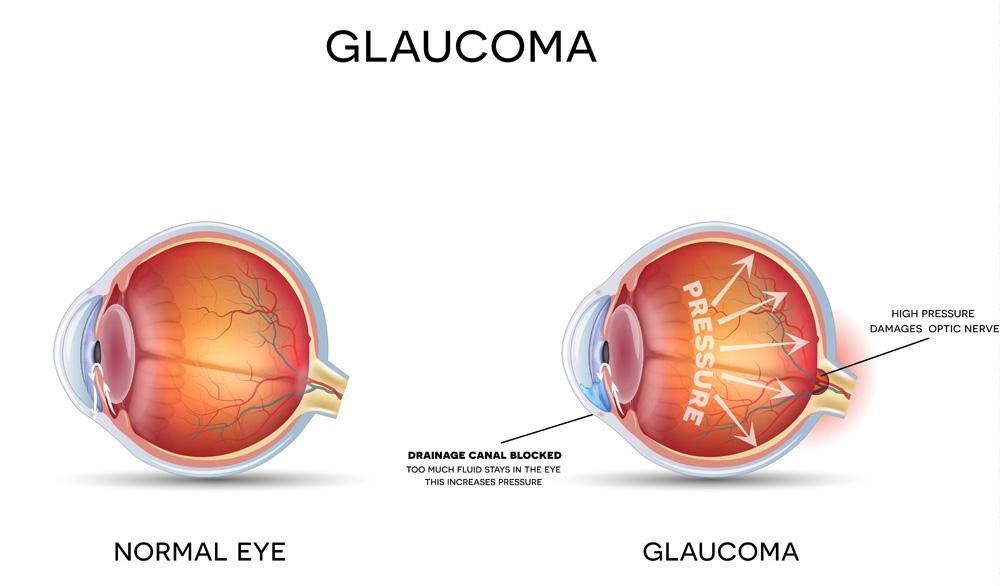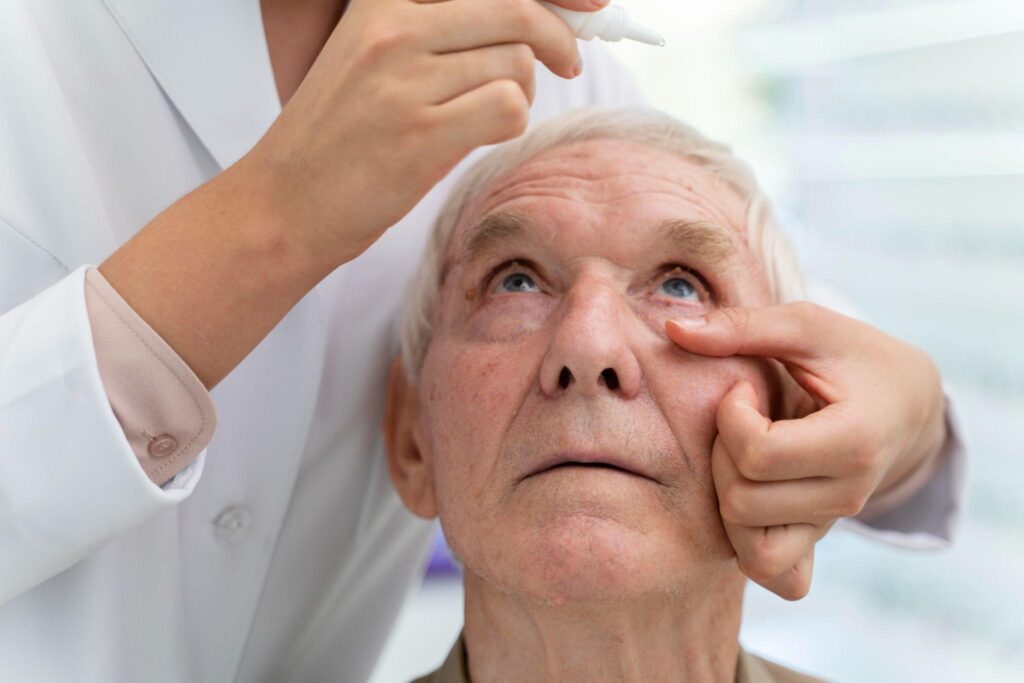Last updated on December 20th, 2024 at 11:34 am
Glaucoma treatment represents a critical frontier in the realm of eye care, as it endeavors to combat one of the leading causes of irreversible blindness worldwide. Glaucoma is a progressive eye disease that affects the optic nerve, leading to vision loss if left untreated.
People often call it the “silent thief of sight” because it typically progresses to an advanced stage without noticeable symptoms. Therefore, early diagnosis and prompt treatment are crucial to preserving vision and maintaining a good quality of life for individuals affected by glaucoma.
From medical therapies, and laser procedures, to surgical interventions, glaucoma treatment options have evolved significantly, offering patients a spectrum of choices tailored to their unique needs.
Glaucoma Diagnosis and Treatment
Early diagnosis of glaucoma is crucial, as the disease often progresses without noticeable symptoms until significant vision loss has occurred. The diagnostic process typically involves:
- Eye Examination: An initial comprehensive eye examination includes measuring intraocular pressure (IOP), examining the optic nerve, and assessing the angle in the eye where the cornea and iris meet.
- Visual Field Testing: This test assesses peripheral vision and helps identify any areas of vision loss.
- Gonioscopy: Gonioscopy allows the ophthalmologist to examine the drainage angle of the eye to determine the type of glaucoma (open-angle or angle-closure).
- Optical Coherence Tomography (OCT): OCT is a non-invasive imaging technique that provides detailed cross-sectional images of the optic nerve, aiding in the early detection of glaucomatous damage.
- Pachymetry: Measurement of corneal thickness, as thinner corneas can influence IOP readings.

Glaucoma Treatment
The primary goal of glaucoma treatment is to reduce intraocular pressure (IOP) within the eye, as elevated pressure is a major risk factor for optic nerve damage. There are several treatments for glaucoma options available, which can be broadly categorized into medical, surgical, and laser therapies:
1. Medication
- Eye Drops: These are the most common initials for glaucoma treatment. They work by either reducing the production of aqueous humour (the clear fluid in the eye) or increasing its outflow to lower intraocular pressure.
- Oral Medications: In some cases, oral medications may be prescribed to complement eye drops or as an alternative when eye drops are not effective.
> Consult a doctor and Order Medicine Online
2. Laser Therapy
- Selective Laser Trabeculoplasty (SLT): SLT is a minimally invasive procedure that uses a laser to target specific cells in the trabecular meshwork, which is responsible for draining aqueous humour from the eye. By enhancing drainage, SLT helps lower intraocular pressure.
- Laser Peripheral Iridotomy (LPI): LPI is used for narrow-angle glaucoma and involves creating a small hole in the iris to improve the flow of aqueous humour.
- Cyclophotocoagulation: This laser procedure reduces intraocular pressure by targeting the ciliary body, which produces aqueous humour.
3. Surgical Interventions
- Trabeculectomy: In this surgery, a drainage channel (bleb) is created to allow excess aqueous humour to drain out of the eye, thus lowering IOP.
- Glaucoma Drainage Devices (Implants): These are small devices implanted into the eye to facilitate the drainage of aqueous humour.
- Minimally Invasive Glaucoma Surgery (MIGS): MIGS procedures are less invasive than traditional surgeries and are typically used for mild to moderate glaucoma. They aim to improve aqueous humour outflow.

Ayurvedic Treatment for Glaucoma
Ayurvedic treatment for glaucoma focuses on balancing doshas and improving eye health through holistic approaches. Herbal remedies like Triphala and Amla are believed to enhance eye function. Netra Tarpana, a treatment involving medicated ghee in an eye well, may help reduce intraocular pressure.
Ayurvedic practitioners also emphasize dietary modifications, stress reduction, and yoga asanas like Trataka to support overall eye wellness. While Ayurveda can complement conventional treatments, it’s essential to consult with a qualified Ayurvedic practitioner and an ophthalmologist to ensure safe and effective glaucoma management.
Laser Treatment for Glaucoma Side Effects
In general, doctors consider laser treatments for glaucoma, such as Selective Laser Trabeculoplasty (SLT) or Laser Peripheral Iridotomy (LPI), to be safe and minimally invasive. However, just like any medical intervention, it can potentially result in adverse effects.
Common side effects can include temporary discomfort, redness, and mild vision blurring immediately after the procedure. In rare cases, more severe side effects like increased intraocular pressure or infection can occur.
It’s essential for patients to discuss potential risks with their ophthalmologist before undergoing laser treatment and to promptly report any unusual symptoms post-procedure to ensure timely intervention if needed. Overall, laser treatment remains a valuable option in glaucoma management with a low risk of side effects.
Conclusion:
Doctors employ a multi-faceted approach in treating glaucoma, focusing on lowering intraocular pressure and preserving vision. Advances in medical, surgical, and laser therapies enable many individuals with glaucoma to effectively manage the disease, maintain their eyesight and enjoy a good quality of life. However, early detection and ongoing care are crucial components of successful glaucoma management.
Read: What are Generic Medicines?
Examples of Generic Medicines
Generic medicines are identical to brand-name drugs in terms of active ingredients, quality, and effectiveness. Some common examples include generic versions of well-known medications like ibuprofen (instead of Advil or Motrin), metformin (rather than Glucophage), and amoxicillin (substitute for Amoxil).
These generics offer cost-effective alternatives while maintaining the same therapeutic benefits as their brand-name counterparts. Health authorities rigorously test and regulate these generics to ensure that they meet the same safety and efficacy standards as brand-name medications.
FAQs on Glaucoma Treatment
Q1. What is glaucoma treatment?
Glaucoma treatment encompasses various approaches, including medications, laser therapy, and surgery, all aimed at lowering intraocular pressure and preserving vision in individuals with this progressive eye disease. The specific treatment chosen depends on the type and severity of glaucoma, tailored to the patient’s needs.
Q2. What is the best treatment for glaucoma?
The best treatment for glaucoma depends on the individual’s condition and can vary. In managing glaucoma and reducing intraocular pressure while preserving vision, doctors often find a combination of eye drops, laser therapy (such as SLT), and surgical procedures (like trabeculectomy) to be effective.
Q3. Are there any side effects associated with glaucoma medications?
Yes, some side effects may occur with glaucoma eye drops, such as stinging, redness, or changes in eye colour. Consult your doctor if you experience any damaging effects.
Q4. Is surgery always necessary for glaucoma treatment?
Not all cases necessitate surgery; doctors can often manage them with medication and laser therapy. Surgery becomes an option when other treatments prove ineffective or unsuitable for the individual’s condition
Related Links: